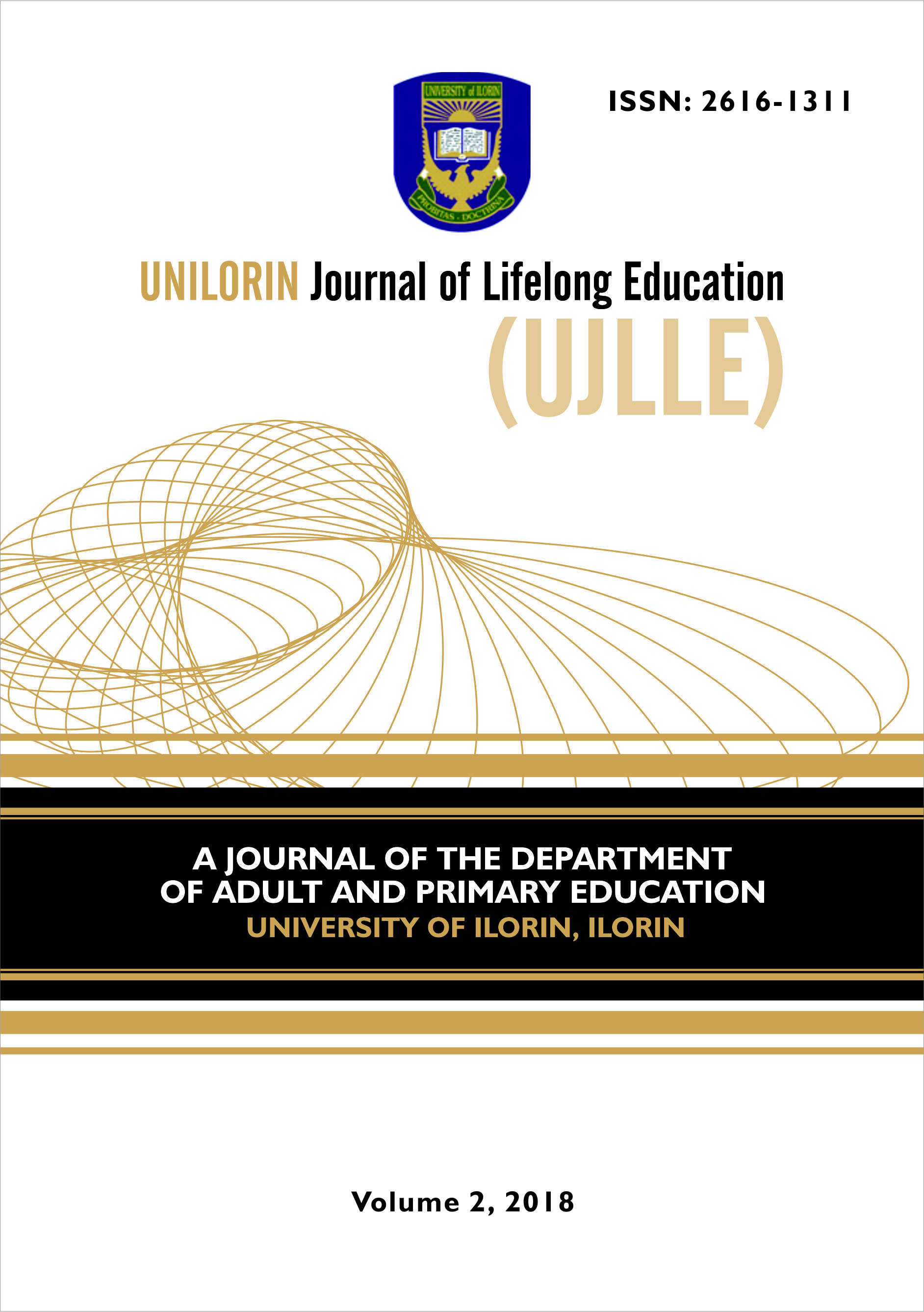DEVIANT BEHAVIOURS AMONG ADOLESCENTS IN SCHOOLS: IMPLICATIONS FOR COUNSELLING
Keywords:
Deviant behaviours, Adolescents, Schools, Implications for counsellingAbstract
Adolescents exhibit deviant behaviours in school at home and in the society at large. Therefore, it has become a serious concern to all stakeholders including teachers, parents and fellow students. This article articulates the behaviours regarded as deviant in schools and causes of deviant behaviours with reference to factors such as: the nature of the home environment, gender, socio-economic status of the parents, peer group influence and residential location. The paper also provides insight on the consequences of deviant behaviour on the child, other adolescents in the schools and the society at large. Finally, the paper identifies various ways by which counsellors could intervene to assist adolescents identify appropriate behaviours and help those with deviant behaviours modify or change their behaviours to better ones.
References
Adedigba,O., Ogungbade, O. K. & Owuyile, S. S. (2018). Prevalence of undesirable behaviours among pupils in Ilorin metropolis: Implications for counselling. Journal of Professional Counselling, 1 (2), 165 - 172
Berger, K. S (2003). The developing person through adulthood and adolescence.
New York: Worth Publishers.
Csikszentmihalyi, M. (2019). Adolescence. Retrieved on Friday 22nd March, 2019
From https;//www.britannica.com/science/adolescence
Duarte, R., Escario, J. J. & Molina, J. A. (2011). Peer effects, unobserved factors and risk behaviours in adolescence. Revista de Economia Aplicada, 33 (19), 17-23
Giddens, A. & Sutton, P. W. (2017). Essential concept in sociology. Retrieved on May 8, 2018, from http://www.everydaysociologyblog.com
Hanrahan, C. (2006). Antisocial behaviour. Retrieved July 29, 2017, from http//www.health-of-children.com/A/Antisocial-Behaviour.html
Hayden, P. & Dunne, P. (2001). Deviance and violence in schools. Retrieved on 29th July, 2017 from www.cndp.fr>PDF>ijvs9_en
Ikediashi, N. N. & Akande, J. A. (2015). Antisocial behaviours among Nigerian adolescents. IOSR Journal of Research and Method in Education (IOSR-JRME), 5(4), 31-36
Loukas, A. (2007). What is school climate? High quality school climate is advantageous for all students and may be particularly beneficial for at risk students. Leadership Compass, 5 (1), 1-3.
Monahan, K. C., Steingerg, L. & Cauffman, E. (2009). Affiliation antisocial peers, susceptibility to peer influence, and antisocial behaviour during the transition to adulthood. Developmental Psychology, 45 (6), 1520-1530.
Nwankwo, B. O. (2003). Anti-social behaviours among Nigerian adolescents. Retrieved on 27th July, 2017 from www.iosrjournals.org>2management
Olaitan, T., Mohammed, A. N. & Ajibola, A. L. (2013). Management of disciplinary problems in secondary schools: Jalingo metropolis in focus. Global Journal of Human Social Science Linguistics and Education, 13 (14), 6-19.
Pager, D. I. (1994). The culture of learning in Khayalitsha schools. Unpublished M.A dissertation. University of Cape Town, Cape Town.
Rew, L. (2005). Adolescent health: A multidisciplinary approach to theory, research, and intervention. Thousand Oaks, CA: Sage.
Seffige-Krenke, I. S., & Klessinger, N. (2000). Long-term effects of avoidant coping on adolescents' depressive symptoms. Journal of Youth and Adolescence, 29, 617–630.
Smetana, J. G., Campione-Barr, N., & Metzger, A. (2006). Adolescent development in interpersonal and societal contexts. Annual Review of Psychology, 57, 255–284.
Wachikwu, T. & Ibegbunam, J. 0. (2012). Psychosocial factors influencing antisocial behaviour among secondary school students in Obio-Akpor Local Area of Rivers State. International Journal of Educational Development, 2 (1), 104-113.
